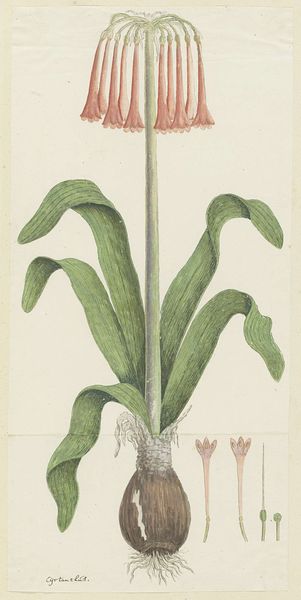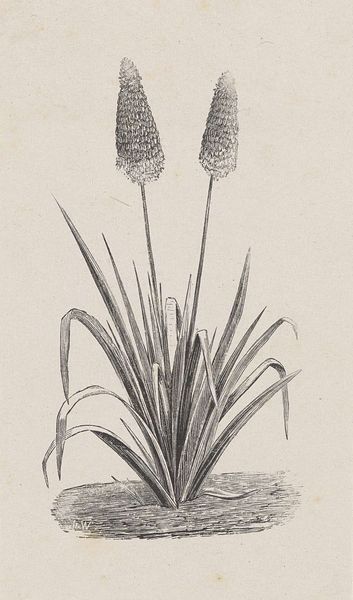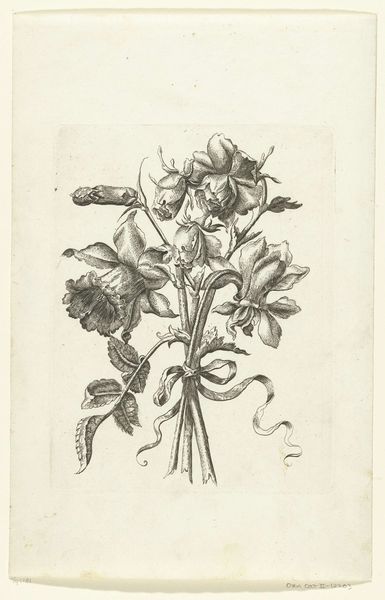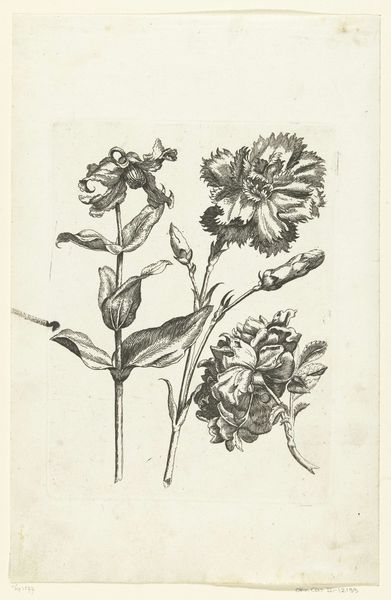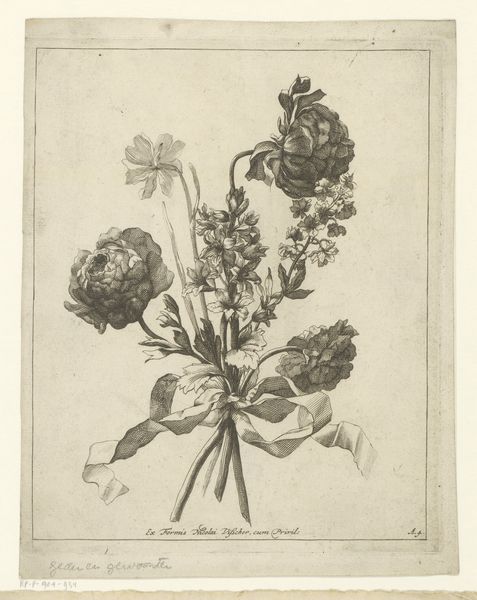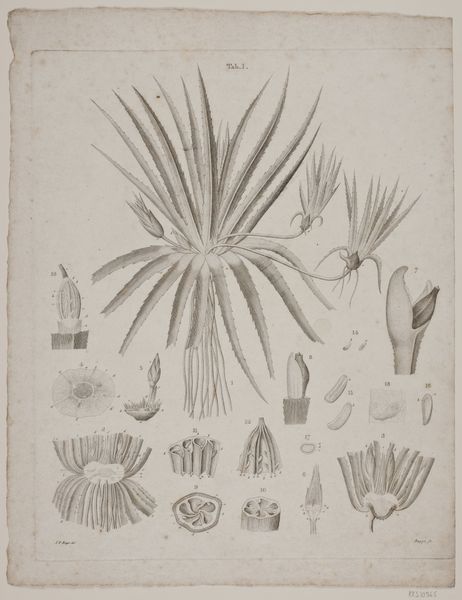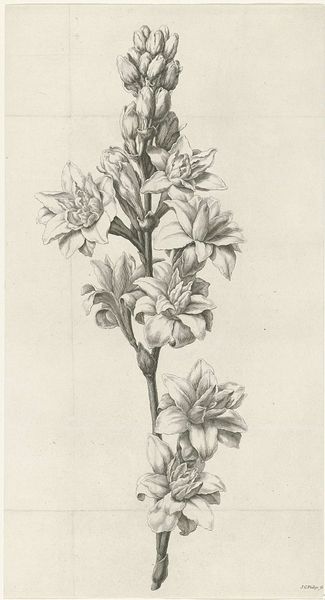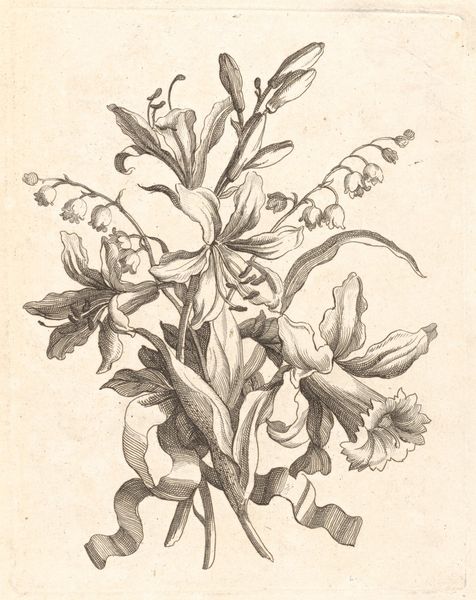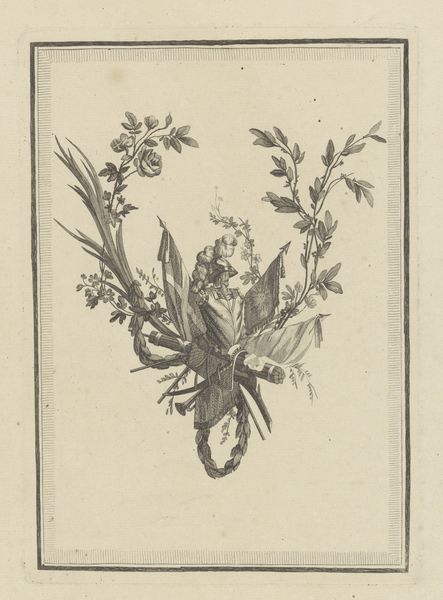
Dimensions: height 127 mm, width 75 mm
Copyright: Rijks Museum: Open Domain
Editor: This is Cornelis van Noorde’s "Hyacint," an etching made sometime between 1741 and 1795, currently residing in the Rijksmuseum. It has such a stark, linear quality to it. What can you tell me about it? Curator: The Hyacint is a reminder that even seemingly simple botanical studies are never truly neutral. Think about the intense drive for colonial expansion during this era. These detailed depictions of flora are products of global exchange, of botanical expeditions fueled by the desire to classify and, ultimately, control the natural world. Editor: So, the image is a little… loaded? Curator: Precisely. Consider the role of the artist as a kind of recorder and interpreter. Van Noorde meticulously captures every detail, but his hand is guided by a prevailing worldview. We must consider that 18th-century classification systems were constructed in ways that supported existing social and racial hierarchies. Editor: That’s a powerful way to frame it. Does the hyacinth itself hold any particular significance in this context? Curator: Absolutely. Flowers, particularly in Dutch art, often served as symbols. They were tied to specific meanings, sometimes even connected to social status and economic power, not to mention the enormous market in tulip bulbs. These symbols were not universal. They were embedded in specific cultural contexts. Editor: This makes me think differently about what I thought was simply a flower. Thanks for opening my eyes! Curator: It is exciting to peel back those layers of historical context! We must continually question whose perspective is represented, and how power dynamics shape artistic expression.
Comments
No comments
Be the first to comment and join the conversation on the ultimate creative platform.

